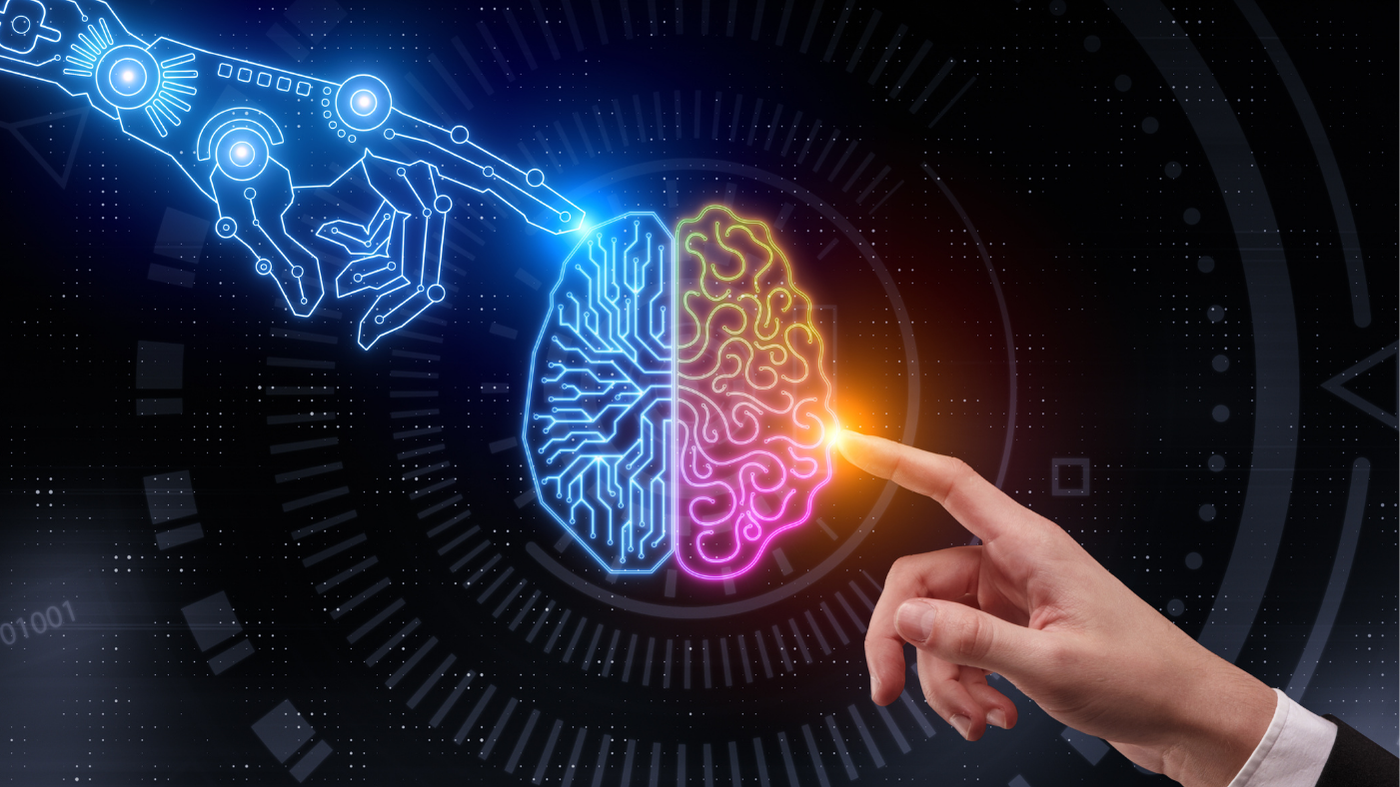Spotlight on... Artificial Intelligence

Introduction
Artificial Intelligence (AI) is rapidly transforming the world in which our young people are growing up. From personalised online learning and instant translation tools to creative writing aids and coding assistants, AI is now part of everyday life. For Swanmore’s pupils, understanding how to use these tools safely, responsibly, and effectively is becoming as important as learning to read or write. The ability to think critically about the information AI provides, and to use it ethically, will be essential skills in both further study and future employment.

At Swanmore, we are helping pupils to explore how AI can support their learning — for example, by generating ideas, checking understanding, or revising key concepts — while making clear that it should never do the thinking for them. At home, parents play a crucial role in reinforcing this message. When families discuss AI openly, model curiosity, and encourage pupils to question what they read or see online, they help children become confident and discerning digital citizens.
At Swanmore, we are helping pupils to explore how AI can support their learning — for example, by generating ideas, checking understanding, or revising key concepts — while making clear that it should never do the thinking for them. At home, parents play a crucial role in reinforcing this message. When families discuss AI openly, model curiosity, and encourage pupils to question what they read or see online, they help children become confident and discerning digital citizens.
Supporting your child with AI does not require technical expertise. What matters most is setting healthy boundaries, asking good questions, and helping them to see AI as a partner in learning rather than a shortcut. Together, we can ensure that pupils use these powerful new tools safely, responsibly, and with integrity — preparing them for a future where human creativity and intelligent technology work hand in hand.
Please note that ChatGPT was used to support the writing of this guide for parents.
What is Generative AI?
Generative Artificial Intelligence, often shortened to Generative AI, refers to computer systems that can create new content — such as text, images, music, or even video — in response to a user’s prompt. Unlike traditional search engines, which simply retrieve existing information, generative AI produces original material based on patterns it has learned from vast amounts of data.
Tools such as ChatGPT, Google Gemini and Notebook LM are examples. These systems can be immensely useful for brainstorming ideas, summarising information, or practising writing skills, but their outputs are not always accurate or balanced. That is why pupils must learn to read critically, check facts, and understand that while AI can generate content, it cannot always guarantee truth.
What GenAI tools do we recommend?
At Swanmore we recommend that pupils use Google Gemini and only when logged into Google with their School Google account. Pupils in Year 9, 10 and 11 can also use Google Notebook LM to support revision.
Safety First
At Swanmore, we want pupils to enjoy the benefits of Artificial Intelligence with confidence and care. Just as we teach them to stay safe on social media, we also help them to recognise the risks that come with AI tools. The most important message is that not everything an AI creates or suggests is true. Generative AI can produce convincing text, images or videos that appear authentic but are completely fabricated — known as “deep fakes.” Encouraging pupils to pause, question, and verify before sharing or believing content is an essential habit.
Parents can support this by discussing examples of how information can be manipulated and by reminding children to check facts using trusted, verified sources. For general knowledge, BBC Bitesize, National Geographic Kids and the NHS website for any health or wellbeing queries are all safe places to begin. Pupils should be cautious of advice from social media influencers or anonymous AI chats that cannot provide reliable references.

It is also important to talk about misuse. AI should never be used to spread rumours, create fake images of others, or generate harmful or distressing material. Such behaviour can have serious consequences both online and in school. If a pupil encounters anything upsetting or inappropriate, they should speak immediately to a parent, teacher, or a trusted adult in school — for example, a member of the safeguarding or pastoral team.
Please remind pupils not to share full names, addresses or locations with online AI tools. Pupils should also avoid uploading pictures of themselves, friends or their family. In addition, pupils should not upload any content that is not theirs to share.
By encouraging open conversations at home and helping children to think critically about what they see, we can make sure that AI remains a tool for learning and creativity, not confusion or harm.
If you are in doubt or worried about online safety including the use of AI, please contact your child’s tutor in the first instance.
Using AI to Support (Not Do) Homework
At Swanmore, we encourage pupils to use Artificial Intelligence as a learning partner, not a shortcut. The aim is to help pupils think more deeply and develop independence, not to let technology complete the work for them. AI should support revision, understanding, and idea generation — but the thinking, writing, and problem-solving must always be their own.
Here are some rules and tips for using AI responsibly at home:
1. Ask AI to Explain, Not to Answer
Encourage your child to use AI to clarify topics they don’t understand — for example, “Explain how photosynthesis works in simple steps” — rather than asking it to do the task or solve the problem.
2. Use AI for Planning and Checking
Pupils can ask AI to suggest ways to structure an essay, plan revision timetables, or check grammar in their own writing. However, they should always reread and adapt any suggestions in their own words.

3. Keep Maths Human
AI tools can often produce correct answers in mathematics but give no insight into why they are correct. At Swanmore, we advise that pupils do not use AI to complete maths homework or Sparx tasks. These are designed to build understanding through effort and practice.
4. Always Check the Facts
Remind your child that AI can make mistakes or “hallucinate” facts. Encourage them to verify key information using trusted sources such as BBC Bitesize or their class notes before submitting any work.
5. Be Transparent
If a pupil uses AI for ideas or explanations, they should make a short note such as “I used Google Gemini to help me plan my answer”. This shows honesty and digital responsibility — values we reinforce at Swanmore.
6. Discuss Together
Ask to see how your child is using AI. Talk about what it suggested, whether it was helpful, and how they changed the response. These conversations build critical thinking and trust.
By following these principles, pupils can use AI as a tool for supporting learning, not replacing it — strengthening both their curiosity and their confidence.
Pupils should not be using Generative AI tools for their Key Stage 4 coursework unless given permission by their teacher. Pupils in Key Stage 4 are given further instructions on this and are ask to sign a Swanmore AI Acceptable Use Agreement.
7. Encourage your child to be cautious with “AI summaries” in search results
Many search engines now include an AI-generated summary at the top of search pages. These can sometimes combine information from unreliable sources or present opinions as facts. Encourage your child to treat these summaries with care: read them critically, then check the actual websites listed below. It is almost always better to visit reputable sites directly — such as BBC Bitesize or government and NHS pages — rather than relying solely on an automatically created summary.
Creative Ways Pupils Can Use AI at Home
At Swanmore, we want our pupils to see Artificial Intelligence as a tool for exploration and creativity, not simply for finding answers. Used thoughtfully, AI can inspire curiosity, deepen understanding, and help pupils express ideas in new ways. Below are some safe and educational examples for Key Stage 3 and Key Stage 4 learners.

Key Stage 3 (Years 7–9)
- English: Ask AI to suggest alternative endings to a story being studied in class, then write their own version and compare it.
- History: Use AI to “interview” a historical figure such as Florence Nightingale or Boudicca to explore life in a different era — then check details against class notes to separate fact from fiction.
- Geography: Generate a short travel guide for a region they are studying, such as “A day in the Amazon Rainforest,” and then identify which details are accurate and which are imagined.
- Languages: Practise French or Spanish conversations with an AI chatbot that can correct grammar or pronunciation, while ensuring the pupil writes and speaks for themselves.
- Art or Design: Ask AI for design ideas around a chosen theme, such as “sustainability,” and then sketch their own interpretation rather than copying the output.
Key Stage 4 (Years 10–11)
- Science: Use AI to create quick revision questions or flashcards from their notes, checking each answer carefully for accuracy.
- Computer Science: Experiment with AI to explain sections of code or to predict what a program might do before running it themselves.
- Geography and Humanities: Ask AI to outline both sides of a debate (for example, “Should deforestation ever be allowed?”), then use this to practise building balanced arguments.
- Drama or Music: Use AI to suggest stage directions, sound effects, or alternative lyrics to inspire creative projects.
Whatever the subject, pupils should always cite their use of AI in their work and reflect on how it helped them. The most powerful learning happens when they use AI to generate ideas — and then use their own judgement, effort, and creativity to make those ideas their own.
Useful tools, links and websites
- Childnet International – “Resources for Parents & Carers: Generative AI”
- they provide a parent-friendly sheet on generative AI and how to support young people safely: Cheat Sheet: Generative AI | Childnet
Also: general internet-safety resources for families: Childnet - UK Safer Internet Centre – Research and advice on children’s online safety (including AI, new technologies). See their blog on generative AI: UK Safer Internet Centre
- Internet Matters – Comprehensive advice on parental controls, online wellbeing, and technology use at home: Keep Children Safe Online: Information, advice, support - Internet Matters
- Google – “Families / Safety” page (UK version) – outlines how parents can use tools such as Family Link, SafeSearch, device-controls and digital ground rules: Safety Center+2Safety Center
- NSPCC – Advice on setting up parental controls, managing device use and helping children navigate online safely: nspcc.org.uk
